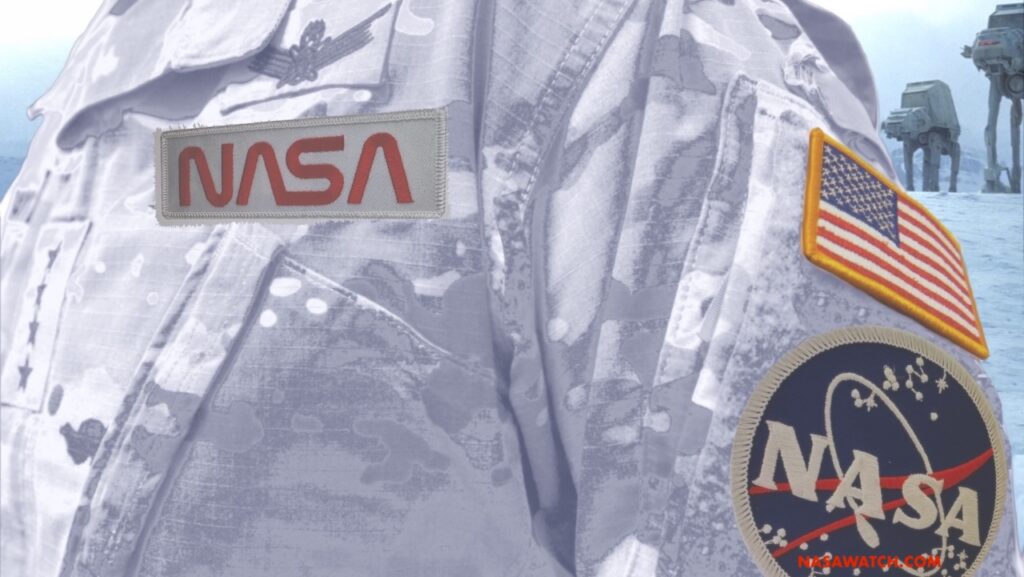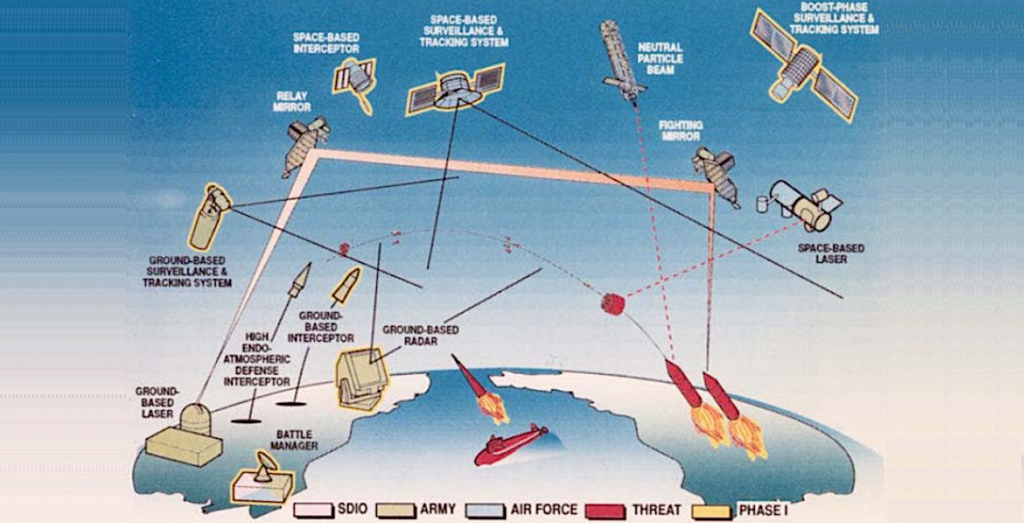Who Is DIU And Do They Want Their Own Space Station?

Defense Innovation Unit Solution Brief Solicitation: Orbital Outpost, Defense Innovation Unit
“The Department of Defense (DoD) seeks solutions for a self-contained and free flying orbital outpost. The solution must be capable of supporting space assembly, microgravity experimentation, logistics and storage, manufacturing, training, test and evaluation, hosting payloads, and other functions. Prospective bidders are invited to submit their proposals (“Solution Brief”) per the guidelines below.” … “Desired future capabilities (available as options for initial or future implementation) include: Common berthing mechanism; In-space assembly using one or more robotic manipulators and interfaces accepting standard flight fixtures; Temporary or permanent attachment to other similar modular outposts (manned or unmanned); Servicing or re-provisioning to extend flight operations for a longer duration; Human-rating; Orbit transfer; Radiation hardening for beyond LEO applications; and Other unique features contributing to national security or defense.”
 Keith’s note: These folks are starting out small and then looking to expand their capabilities in a modular fashion. It is not at all clear what the end result will be or what “human rating” means. Some people have been calling this thing a “mini-space station” but it is not obvious what it will be since they have options that go all over the place. Also, is there any connection between this project and the SpaceForce/Space Corps thing. As for the source of this solicitation, Defense Innovation Unit, they are a government entity that is “contracting with companies offering solutions in a variety of areas – from autonomy and AI to human systems, IT, and space – to solve a host of defense problems.” And there is a Defense Innovation Advisory Board that seems to oversee what this group does. It is chaired by Google’s Eric Schmidt and has Neil deGrasse Tyson as a member. You can follow them on Twitter at @DIU_x.
Keith’s note: These folks are starting out small and then looking to expand their capabilities in a modular fashion. It is not at all clear what the end result will be or what “human rating” means. Some people have been calling this thing a “mini-space station” but it is not obvious what it will be since they have options that go all over the place. Also, is there any connection between this project and the SpaceForce/Space Corps thing. As for the source of this solicitation, Defense Innovation Unit, they are a government entity that is “contracting with companies offering solutions in a variety of areas – from autonomy and AI to human systems, IT, and space – to solve a host of defense problems.” And there is a Defense Innovation Advisory Board that seems to oversee what this group does. It is chaired by Google’s Eric Schmidt and has Neil deGrasse Tyson as a member. You can follow them on Twitter at @DIU_x.









Given the presence of Russia and other foreign nationals on the ISS it’s understandable the DOD would want their own station for doing this research. The availability of commercial crew means they won’t have to depend on either NASA for access or have to develop their own HSF system. The requirements also are simple enough that someone like Bigelow Aerospace could satisfy them quickly and economically. All in all this is a program that could move forward quickly.
That makes sense, except for one thing. What DoD research? I’m not aware of any military space applications which require a station. The Soviets experimented with military stations, with the Almaz stations, and decided robotic spacecraft were a better choice. For something requiring servicing in orbit, I’m sure SpaceX or Boeing would be willing to sell them a Dragon or Starliner for the occasional visit. Or fly the payload on an X-37B (by the way, a photo of it in orbit came out a few days ago. An amateur took it with an 8-inch telescope.) Of course, I don’t expect the Department of Defense to tell us what work they are considering, or if they are just considering their options, but to me, that’s the most surprising aspect of this.
Indeed. Flying research payloads on rapidly reusable platforms like X-37B, or commercial capsules would be a good approach, with lots of iteration and therefore good odds to make progress.
It’s not clear what value a man-tended tiny space station would have for the DOD.
Decades ago, there was much worldwide anxiety surrounding the issue of readily available and manned (person-ed?) orbital stations. Those of my vintage will recall magazine covers, for instance, with images of uniform-clad “he-men” throwing missiles from orbit; text would wonder how anyone could possibly defend such action.
Fast forward: that particular future never happened, mostly because costs remain high. Now, though, with so much wealth concentrated in the hands of so few, and with access to space proven to be very widely disseminated, is Dr. No lurking about, quietly shoveling s**t, thinking about the possibilities?
If Dr. No is around they would know that Cruise Missiles and drones are far more effective weapons since anyone with a pair of binoculars will be able to track their space station and anyone with a good sounding rocket would be able to take it out. I would worry more about the luxury submarines some firms are selling.
Actually, thinking about it. a modern Dr. No wouldn’t even waste time with such primitive Stone Age weapons. They would just hide out in their parent’s basement and take over the world via the Internet of Things and through hacking social media like Twitter and Facebook. ?
You mean like the russians and their 36000 bots that flooded social media with over 100 million posts in support of trump?
you mean like that?
RUSSIAN BOTS RETWEETED TRUMP 500,000 TIMES AT END OF 2016 CAMPAIGN
https://www.newsweek.com/ru…
After Mueller report, Twitter bots pushed ‘Russiagate hoax’ narrative
https://www.nbcnews.com/tec…
Mueller report details the evolution of Russia’s troll farm as it began targeting US politics
https://techcrunch.com/2019…
Just illustrates how a modern Dr. No wouldn’t waste time on space weapons.
I dunno, Doc, there’s nothing like the finality of nuclear bomb… 🙂
I have a fixation, becoming more annoying as I age. This fixation contributes to just how annoying older people seemed to me, back when I wasn’t one of them.
The fixation? How things turned out so differently than how we thought they would: where’s all the leisure time computers were to have wrought? Where is the paperless office? And why isn’t my Martian office doing as well as expected, anyway?
On the other hand, I heard Emily Lakdawalla on NPR today, waxing philosophical, explaining how robots and machine explorers are every bit as exciting as human exploration, and, heck! maybe even better!
Some things never change.
With those specs the “crew” would need to be mice.
On the one hand, that’s the minimum. On the other hand, all the capabilities mentioned can’t be done with just those minimum specifications. And anything which could accomplish all those things would be extremely ambitions. This is a Request For Information, not a Request For Proposals. I think they are fishing, putting out a wish list, and asking industry to tell them which permutations, combinations, and subsets to those items can be done (and for what price.)
DragonLab (aka COTS cargo Dragon capsule) can fulfilled all the desired specification requirements except for the manipulator. It even have a common berthing port.
And yes, rodents goes up to the ISS regularly in the Dragon.
Too bad SpaceX halted the production of the COTS cargo Dragon.
COTS Dragon is a go.
You are correct in thinking thinking of “Dragon Lab”, which while an amazing capability, did not generate the revenue stream that would have been required to make the business case. The initial idea was to fly some science on a refurbished Dragon.
Simply put – there was not enough interest from the science community to generate a market for SpaceX.
Now we can debate about why their was no market and that is certainly worth investigating.
a) SpaceX claims of technology were not mature and demonstrated to a level that users felt comfortable with.
b) Elon time is not reliable. Always add an additional 20 to 30 percent on the time line.
c) Elected officials and bureaucrats thought, and some still do, think Elon is bat spit crazy. Falcon Heavy is slowly winning over the DoD.
Nuts. Someone actually read the specs.
So skip my previous MOL2 comment. This I’ll conjecture is meant to be human-tended, and used operationally in high and low orbit. We could speculate on the mission, but it’s about “research” as much as MOL was.
But I’m just bloviatin’.
“Beyond LEO applications” and “orbital transfers.” That’s not a space station–it’s a vessel in permanent orbit.
MOL2?
I thought the Defense Department had an innovation unit called DARPA. Is there a reason they needed another?
They have somewhat different charters. DARPA supports longer-term research and development, often on things that don’t address a current Department of Defense need. They basically take wild ideas and turn them into something that could, realistically be applied to some need. This Defense Innovation Unit is a relatively new thing. They are about taking technology which has already reached a certain level of practicality and apply them to a specific need. Someone might say they should really be two branches of the same organization, but I’m not convinced of that.
“…I’m not convinced of that.”
Nor am I. DoD takes lots of hits, some deserved, some self-inflicted. Willingness to take chances on new tech is an important strength.
Definitely, but that isn’t what I was thinking about. It looks like the DoD now has two offices. One to take blue sky ideas and turn them into something that might actually work, and another which takes things that might actually work and turn them into something that actually does work. I think those functions are different enough that two, separate offices are a good idea. But someone else might say it’s more efficient to combine them. Not drop the blue sky to possible role, just combine the management. My opinion is that it could put the blue sky work under a manager who had more practical interests.
“One to take blue sky ideas and turn them into something that might actually work, and another which takes things that might actually work and turn them into something that actually does work”
The efficacy of this arrangement will largely depend on the nature of the feed-back loop between the two entities.
On the other hand, I suppose I thought that private interests were to be charged with finding utility in DARPA work products. Perhaps DoD has been unhappy with the arrangement? Or perhaps private interests have failed to develop?
This important and necessary division is emblematic of the larger political discussion. And let’s hope that someone with the limitations of the former Sen. Proxmire never gain authority. Over either realm.
The DoD has a number of duplicative organizations – DARPA, now they have the Space Development Agency, they have various Office of Scientific Researches, etc etc. Some accept more risk than others.
Given how poorly organized and under-performing the NASA ISS has been for 20 years, I’d guess that any reasonably organized group with the requisite experience could do a far better job of managing a Station. The real problem is to get the experience base since none of the existing ISS people have it. They can only tell you ow it should not be done.
This is actually a well established capability; the Air Force has been flying a “space lab” for several years – the Orbital Test Vehicle. Also when I worked on the Shuttle we flew LOTS of DoD payloads and DoD people. Some DoD experiments are still done on the ISS.
The DoD has also flown LOTS of other development vehicles, etc etc – some of which had short lives and some of which had long lives.
This is probably one DoD organization (DIUX) that wants their own little bitty experiment space – maybe the OTV flights in the future are full? The DoD has a number of overlapping organizations that develop new technology, take big or small risks, etc.
The dimensions seem rather specific. Its almost as if they have a very specific plan for this, which makes me wonder if its connected to experiments that have been done on the X-37B. I wonder if its for experimental materials science or actual fabrication?
BTW, Speaking of Space Stations, today marks 8 years since the last Shuttle mission to ISS.
This reminds me of the Manned Orbital Laboratory of the 1960s, which also was championed by the DoD. They have been seeking their own space station for a long time, apparently.